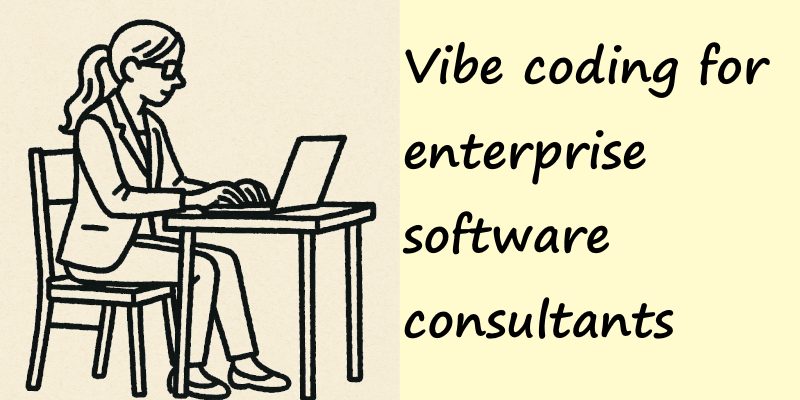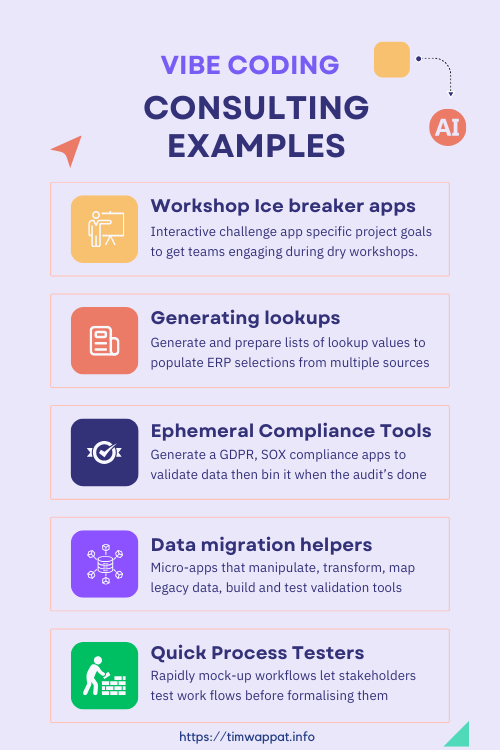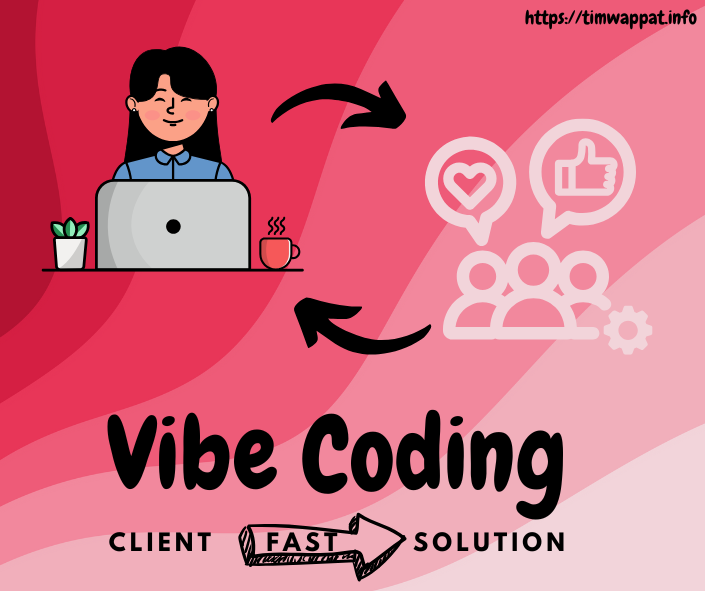What is vibe coding, and should enterprise software implementation and support consultants care?
Vibe Coding is the idea of building software without caring about the code. It is about focusing purely on the outcome. Why should you care?

Rise of Personal & throwaway Software
There is a buzz term doing the rounds in 2025 – "Vibe Coding" – coined by Andrej Karpathy of OpenAI in February 2025. In just a couple of months, it has exploded across social media and is gaining traction fast.
If you work within the enterprise software space as a consulatant or consulting engineeer, you need to understand that Vibe coding will at its best is another tool for your projects and at its worst changes customer expectations, more on that in this post - The Vibe Coding Effect – Client Expectations and the Cost of Custom ERP/Enterprise Development

What is Vibe Coding?
Vibe Coding is the idea of building software without caring about the code. It is about focusing purely on the outcome – what you want the application to do – and letting generative AI tools handle everything else. The future of software may not be about code at all, instead it is about ideas, vibes, and what you want to get done.
The process typically involves prompting AI to generate an entire software application in minutes, which is automatically deployed and available on the internet to use. The user may never touch the code, nor do they need to. If something doesn’t work, they simply prompt the AI again, refining the request until it does. Generating disposable crappy Power Shell scripts to solve a problem using generative AI, throwing that script away afterwards would be another example of Vibe Coding.
The result? Applications or code that are good enough to solve specific, often one-off problems but are rarely polished or production-grade. These applications are disposable by design – throwaway software that serves a purpose, then gets deleted or forgotten.
How Does Vibe Coding Work?
While basic prompting can be done in tools like Cursor Composer, more powerful environments such as https://Bolt.New elevate the experience. These platforms provide full awareness of the software solution's file structure, allowing users to generate, deploy, test, and iterate on applications in a single user friendly environment – all without writing or reading a line of code.
If there are bugs and issues, the user feeds the errors back into the gen AI prompt, essentially brute-forcing a solution through repeated prompting. The creator doesn’t care if the code smells bad or is poorly structured – as long as it works. The focus is on the the vibe of what is to be built not how to get there.
Prompt, Prompt and Prompt Again
Iteration is normal: users may prompt through multiple iterations, decide it is not worth fixing, and simply start over. Because the effort and cost of generating the code is so low, the software becomes truly disposable. This changes the relationship with the code entirely.
Vibe coding puts the fun back into coding – it makes homegrown, entry-level applications accessible to everyone, not just trained developers.
Ideas for Consultants and Enterprise Implementers to use Vibe Coding in Workshops & Migration Process.
Vibe coding changes the game for solving short-term or highly specific problems that don’t warrant a full development cycle. Think of scenarios like:

The speed is the real win. Vibe coding can contribute in to create minimum viable products (MVPs) up to many times faster than traditional methods due to ability to quickly workshop practical code demos of proposed solutions. This acceleration in development allows for more iterations and refinements within shorter time frames, leading to better-tailored solutions for clients.
A task that might take a developer days or weeks can be completed in a half-hour prompting session. This brings massive productivity gains, especially for consultants and business users who traditionally rely heavily on developer time or their own time too.
It also potentially avoids escalating tasks to more technical colleges and can lead to quicker solutions in data extraction and formatting tasks when consultants are out on customer sites. For example where data needs to be extracted from oddly formatted data sources for data import into a new ERP solution, a quick application can be built and thrown away afterwards.
Vibe coding also benefits software developers, offering a way to prototype solutions quickly, even in languages or platforms they are unfamiliar with. It is ideal for fast proof-of-concept work before investing in full-scale development.
Bridging Skill Gaps and Enhancing Collaboration between teams
Vibe coding can help consultants bridge the gaps between development teams and clients when developing custom solutions by rapidly vibe coding working software, practical working examples are provided to the client. A picture tells a thousand words. A good software requirement document will still required but it is another tool to ensure that software requirement documents and informed by prototypes, capture more of what is required. Aspects like validation will have already been experienced by the client, drawing out deeper discussions about functionality that would not have come to light if the client had not had the chance to try a prototype. Ultimately this translates into more successful projects by the software partners and less time wasted in projects from following incorrect paths and having to rework solutions to correct software specifications lacking in detail.

I urge you to go try tools such as Bold.New to fully understand the usefulness of Vibe Coding. In the next post lets investigate the impact on client expectations of vibe coding. The Vibe Coding Effect – Client Expectations and the Cost of Custom ERP/Enterprise Development
But… There Are Risks
It is important to understand where the risks lie – especially in an enterprise or consulting context.
- Security is weak by design. These apps are not built with rigorous security practices unless they are prompted to be by an expert. It would be unwise to store confidential or sensitive data in a vibe-coded application without expert review.
- Compliance. Be aware of compliance, GDPR, PCI, SOX etc. Good for workshops, not for production use.
- Code quality is highly variable. The AI might produce verbose, messy, or inefficient code that is hard to extend or maintain. This isn’t a problem when you are throwing the app away – but it is if the project scope creeps into something longer term.
- What you don’t know can hurt you. AI doesn’t compensate for a lack of domain knowledge. If the creator forgets to include important considerations around: Industry compliance, Data security, Authentication, Database design, Data integrity, Backups, Application architecture, Future Maintainability and extendability.
…fine for quick personal apps, but dangerous for production systems.
However, that’s not what vibe coding is about. The beauty of it is that it doesn’t need to meet enterprise-grade standards. It is designed for personal software, rapid prototyping, and solving small problems fast – then being discarded once the job’s done.
It will only get better
Also understand that both the user experience and the quality of the output will improve over time. Prompting applications will lead to better written and more secure solutions being produced as the gen AI tooling improves. However these tools are already useful and worth getting familiar with.
